Photographs: Reuters
Changes in the distribution of power, historians hold, are the main source of systemic conflict in world politics. The rise of new powers and the decline of the old sets up the context for destabilizing struggles for rebalancing the world.
Either preventing the power transition from one great power to another or facilitating it involves much bloodletting. One of the big debates in international politics today is whether we (India) are on the cusp of a power transition in the Indian Ocean, the Asia Pacific and the world at large.
Some argue that the relative decline of the United States is inevitable and a reorganization of the balance of power in the Indian and Pacific Oceans is necessary amidst the rise of China and the emergence of India. Others argue that structural change in the geopolitics of the Indian Ocean may be inevitable, but not imminent.
...
Excerpts taken from C Raja Mohan's speech at the National Maritime Foundation, New Delhi on July 19, 2010
Nothing is assured in the life of nations
Image: Indian naval ships taking part in an execise in the Indian OceanIndia is inching its way to become the third largest in the next couple of decades if not earlier. The rapid accretion of economic power means Beijing and Delhi will be able to devote a part of it to acquiring a stronger military muscle.
For a long time to come China and India will be countries with low per capita incomes. Yet given the large size of their population, Beijing and Delhi can become major military powers by spending a small portion of their GDP on defence in a sustained and purposeful manner.
Put another way, China and India can become powerful without being rich in the traditional per capita sense. While all trend lines point to the inevitable emergence of China and India as great powers, nothing is assured in the life of nations.
India and China will have to earn their greatness
Image: INS Tabar on a patrolling mission in the Indian OceanRecall the debate on the rising Japan a quarter century ago. Remember too the celebrated 'declinist' literature on the United States at the end of 1980s. It was the Soviet Union that collapsed against all expectations and the United States bounced back.
China and India have enormous internal problems and their leaderships could either stumble or over-reach -- both of which could delay or destroy their much-awaited moment in the sun.
In any case, China and India will have to earn their greatness; I doubt it will be simply thrust upon them. Having entered those caveats let's turn to some of the important geopolitical consequences of China's rise and India's emergence, with a focus on the maritime context. Allow me take up five themes.
The first is the nature of the economic transformation in China and India that is fundamentally different from that of Soviet Russia -- the previous challenger to Anglo-American primacy in the world. In the first half of the 20th century, Stalin extracted every possible ounce of human and material resource at home to make Russia a great military power.
India and China will reconfigure littoral's geopolitical space
Image: Cargo ships at a Chinese harbourSecond, the increase in the economic mass of China and India will intensify their gravitational pull and most certainly reconfigure the geopolitical space in the littoral of the Indian Ocean and the Asia Pacific.
This would mean a restructuring of the relationships among major powers and regional actors. In my view the most important 'strategic triangle' in our littoral and the maritime world will be that between the United States, China and India.
While other major powers like Russia, Japan, France and medium powers like Korea, Indonesia, Australia and Iran to name a few will indeed have a bearing on the maritime structures of the Indian Ocean and the Pacific, it is the triangular dynamic between Washington, Beijing and Delhi that will be the most consequential.
India and China are today more reliant on the seas than ever
Image: A Chinese Navy helicopter is parked on a warship on part callThere are many ways in which the triangular relationship could unfold. Some Americans see the importance of accommodating the rise of China through the construction of a condominium; some others see India as a natural balancer against China's rise. Yet other Americans argue that Washington must balance against both Beijing and Delhi.
Some in Beijing worry that India's naval power, acting in collaboration with the United States and Japan, could hit at the vital maritime interests of China.
There are others in Beijing who speculate that the rise of Indian naval power is a threat to the United States rather than to China. Delhi is itself quite coy about identifying the hierarchy of its threats. Standing with Chinese leaders we talk about the promotion of a multipolar world; shaking hands with the Americans we proclaim a natural alliance with the United States.
Third, the logic of globalization and trade means China and India are today more reliant on the seas than ever before in their history. Nearly 90 per cent of world trade in commodities and goods continues to flow by the seas. China's per capita income today is around $4000 and India's a little over $1000.
Heading towards building blue water navies
Image: INS Mysore on patrolling dutyThe more integrated China and India become with the world economy, greater are their stakes at sea. If oceans are the lifelines for the economic well-being of nearly two and a half billion people, Beijing and Delhi are bound to invest heavily -- in diplomatic and military terms -- in the management of the order in the Pacific and Indian Oceans.
Fourth, unlike in the past when China and India emphasized their autarky, their growing interdependence with the rest of the world now demands more supple and complex military strategies to realise their transformed national interests. As the most versatile of the military instruments, the navies will become increasingly weighty in the strategic calculus of China and India.
Both Beijing and Delhi have begun to increase the share of resources devoted to their Navies. This would mean a steady expansion of the size and quality of Chinese and Indian naval forces. It is also clear that both Beijing and Delhi will move towards building blue water navies.
Rediscovering their naval heritage...
Image: INS Rana of the Indian Navy's Western Fleet leads the passing exercise formation, behind the Nimitz-class aircraft carrier USS Ronald ReaganPhotographs: Petty Officer 3rd Class Gary Prill
That Chinese and Indian security interests go beyond the local and regional is underlined by the fact that the economic prospects of their large populations are dependent on access to vital natural resources and markets in distant lands. Powerful blue water navies, then, become inevitable adjuncts to the globalizing economies of China and India.
Fifth, this Chinese and Indian interest in acquiring maritime power marks a historic break from the strategic traditions. Naval nationalists in both China and India do speak of the ancient maritime traditions of their respective nations.
China has made special effort to rediscover its naval heritage and elevate the maritime consciousness of its people. In India the belief in the past greatness is equally intense, while the collective effort to express it is far less impressive.
While China has Admiral Zheng He and India has Rajaraja Chola as maritime heroes, it would not be inaccurate to state that the naval orientation in China and India has at best been episodic. The principal security threats in both China and India were from their land frontiers, and interestingly from the same direction, the northwest.
The Chinese preoccupation with barbarian invasions from the northwest saw the building of a great wall, and India had to devote most of defence energies to the stabilization of the region between the Indus and the Hindu Kush. That did not leave much time and space for the sustained development of naval capabilities, despite being blessed with long coastlines.
Watch out for PART II of the series tomorrow...

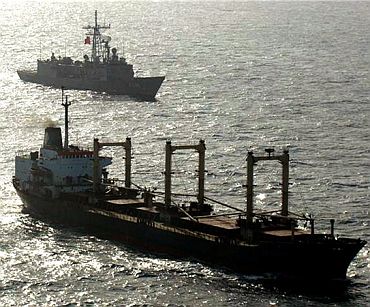
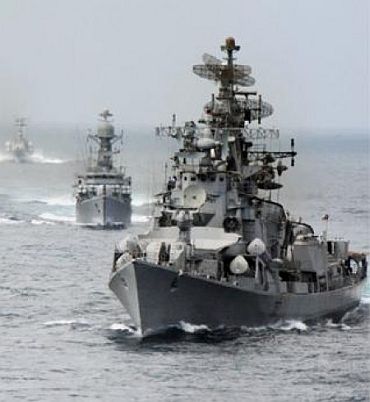
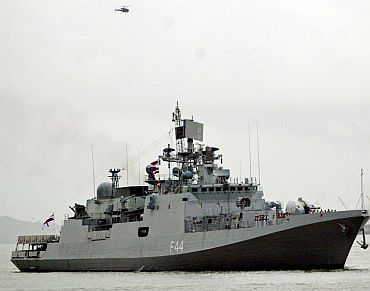
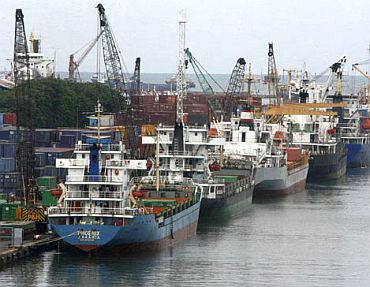

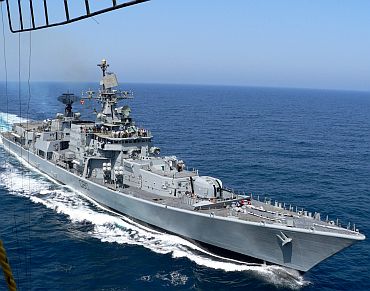
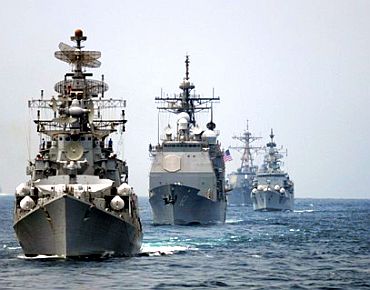
article